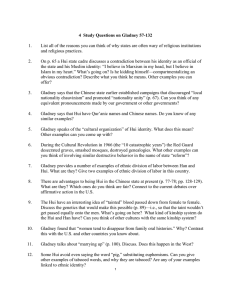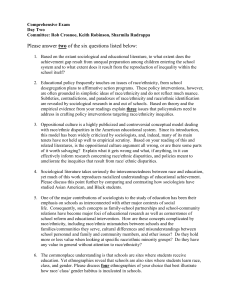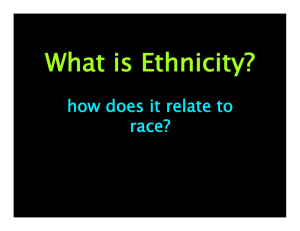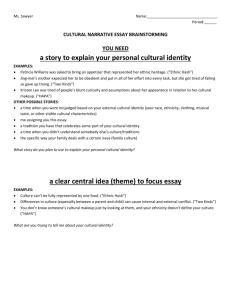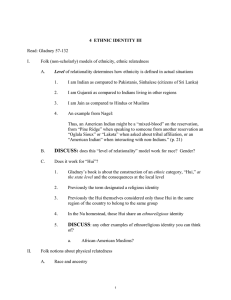1. What were your reactions to Gladney’s anecdote at... Hui refuses to drink from a cup that may have... 3 Study Questions on Gladney 25-54; Nagel 19-33
advertisement
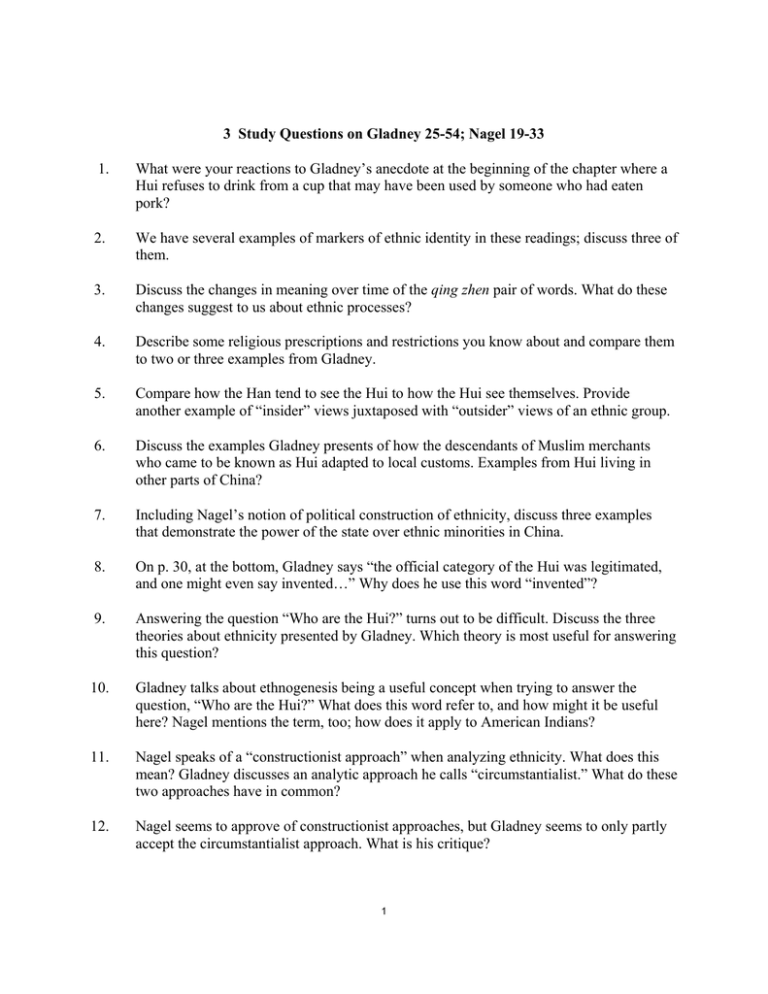
3 Study Questions on Gladney 25-54; Nagel 19-33 1. What were your reactions to Gladney’s anecdote at the beginning of the chapter where a Hui refuses to drink from a cup that may have been used by someone who had eaten pork? 2. We have several examples of markers of ethnic identity in these readings; discuss three of them. 3. Discuss the changes in meaning over time of the qing zhen pair of words. What do these changes suggest to us about ethnic processes? 4. Describe some religious prescriptions and restrictions you know about and compare them to two or three examples from Gladney. 5. Compare how the Han tend to see the Hui to how the Hui see themselves. Provide another example of “insider” views juxtaposed with “outsider” views of an ethnic group. 6. Discuss the examples Gladney presents of how the descendants of Muslim merchants who came to be known as Hui adapted to local customs. Examples from Hui living in other parts of China? 7. Including Nagel’s notion of political construction of ethnicity, discuss three examples that demonstrate the power of the state over ethnic minorities in China. 8. On p. 30, at the bottom, Gladney says “the official category of the Hui was legitimated, and one might even say invented…” Why does he use this word “invented”? 9. Answering the question “Who are the Hui?” turns out to be difficult. Discuss the three theories about ethnicity presented by Gladney. Which theory is most useful for answering this question? 10. Gladney talks about ethnogenesis being a useful concept when trying to answer the question, “Who are the Hui?” What does this word refer to, and how might it be useful here? Nagel mentions the term, too; how does it apply to American Indians? 11. Nagel speaks of a “constructionist approach” when analyzing ethnicity. What does this mean? Gladney discusses an analytic approach he calls “circumstantialist.” What do these two approaches have in common? 12. Nagel seems to approve of constructionist approaches, but Gladney seems to only partly accept the circumstantialist approach. What is his critique? 1 2 13. If you don’t speak Armenian, are married to a non-Armenian, don’t do business with Armenians, do not attend an Armenian church or belong to Armenian voluntary associations or participate in the events these churches and organizations sponsor, can you still say you’re Armenian? If you can, on what grounds? Discuss, including Nagel’s phrase “from being to feeling.” 14. Nagel says that ethnicity is popularly viewed as biological, a feature of ancestry and genetics. Is this your sense of ethnicity? Discuss. 15. Nagel introduces several odd-sounding concepts: ethnic choice (ethnic options, ethnic switching), ethnic identity portfolio, blood quantum, ethnicity for profit, rational choice, hegemonic ethnicity. Discuss the three you understand best. 16. Discuss Nagel’s point about historical moments when ethnic identity is mandatory. Provide an example of internal mandatory ethnicity, then an external one. 17. Give three examples of states politically constructing ethnicity. For what purposes? 18. Give three examples of ethnic backlash. 19. Both authors speak of “primordiality.” What does this mean? Why, according to Nagel, do we see American Indians as more primordial than any other ethnic group? 2 MIT OpenCourseWare http://ocw.mit.edu 21A.226 Ethnic and National Identity Fall 2011 For information about citing these materials or our Terms of Use, visit: http://ocw.mit.edu/terms.


